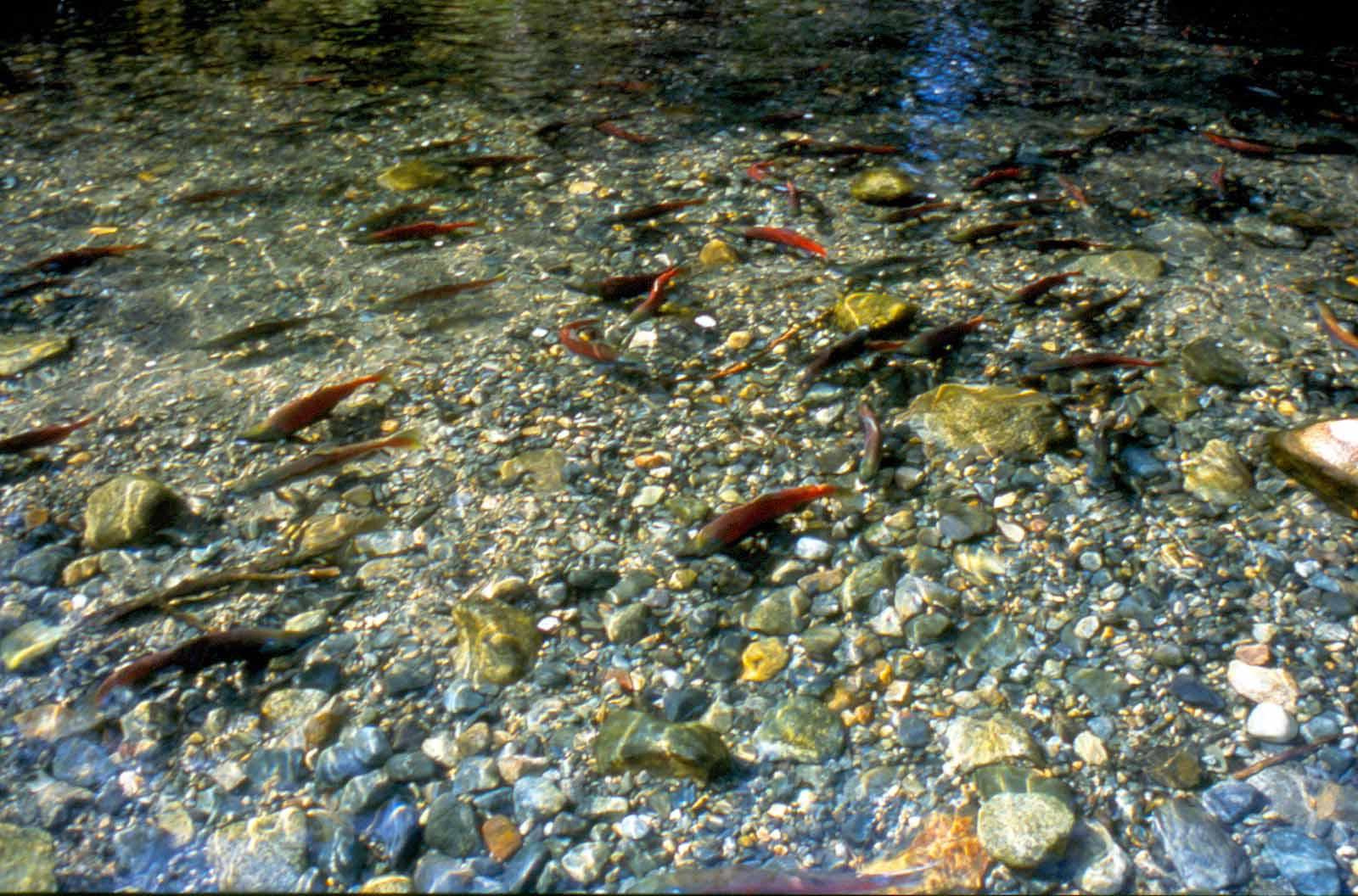Concern Over Feather River Baby Salmon After Water Release

The following press release is courtesy of the Golden Gate Salmon Association:
San Francisco — Like all Californians, members and officers of the Golden Gate Salmon Association (GGSA) have witnessed with great concern the damage at the Oroville dam and threat to human health and safety it posed. GGSA is greatly concerned for the well-being of people living in the shadow of the dam and losses and disruptions they’ve experienced.
With emergency response now moving into a new phase, GGSA calls on the California Dept. of Water Resources to exercise caution to preserve what’s left of this year’s wild Feather River baby salmon run. Turning off releases over the dam’s spillway has caused a dramatic drop in the Feather River downstream. This is happening at rates too fast, in many cases, for baby salmon to safely escape back into the river’s main channel. The formerly inundated landscape downstream is now pock marked with numerous ponds, puddles and mini lakes as river flows drop, many with baby salmon stranded in them. As these ponds shrink over the next few days, the stranded fish will become more and more concentrated, making them targets for birds and other wildlife in search of an easy meal.
State crews with boats and nets are out rescuing the biggest concentrations of stranded wild baby salmon they can find. They’ll capture and return as many as they can back into the now-shrunken river.
“Protecting public safety, in response to the failure of the Oroville spillway is absolutely critical. But California’s salmon and salmon fishermen are also being harmed by this crisis. We’re grateful to the California Dept. of Fish and Wildlife and other state workers who are out now trying to save our future by rescuing these stranded baby salmon. These folks have been worked to exhaustion and we acknowledge the great work they’re doing,” said GGSA board member Mike Aughney.
This stranding is a significant threat to wild fall run Chinook salmon, upon which California’s salmon fishermen and women depend. Federally protected spring run Chinook salmon are also affected. Turning the dam off has also dewatered untold numbers of federally protected steelhead trout nests, leaving incubating eggs high and dry.
“GGSA calls on DWR to conduct its repair and response operations in ways that minimize loss of wild baby salmon downstream. Those small two inch salmon will be two to three feet long in 2019 and 2020 and represent our future income,” said GGSA executive director John McManus.
“Untold numbers of baby salmon are stranded in isolated pools left after the water was turned off at the dam. Those salmon represent our harvest in the 2019 fishery,” said GGSA founder and Treasurer Victor Gonella. “Their survival will affect coastal communities that depend on both sport and commercially caught salmon.”
Normally dam operators are required to follow strict protocols governing how fast water releases from dams can be turned down in order to avoid stranding fish downstream. In this case, problems with the failure of the spillway forced hard choices leading to the sudden shutoff of releases.
The current fish rescue follows earlier efforts by the California Dept. of Fish and Wildlife that succeeded in saving hatchery salmon at the Feather River hatchery in the early days of the spillway failure. In that case, quick, creative thinking led to the overnight construction of an alternative water supply to the hatchery that saved incubating eggs and baby salmon from being drowned in mud.
Dealing with the dam problems will go on for months, if not years. After the immediate emergencies are dealt with, the state needs to also address long term structural problems caused by the poor design of the 50 year old Thermalito complex downstream of the dam that often makes the Feather River lethally hot for spawning salmon. Fixing this design flaw is a requirement to renew the dam’s operating license with the Federal Energy Regulatory Commission.
The Golden Gate Salmon Association (www.goldengatesalmonassociation.org) is a coalition of salmon advocates that includes commercial and recreational salmon fisherman, businesses, restaurants, a native tribe, environmentalists, elected officials, families and communities that rely on salmon. GGSA’s mission is to protect and restore California’s largest salmon producing habitat comprised of the Central Valley river’s that feed the Bay-Delta ecosystem and the communities that rely on salmon as a long-term, sustainable, commercial, recreational and cultural resource.




